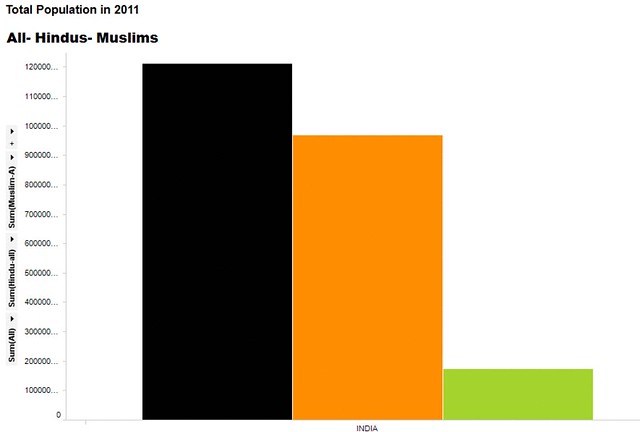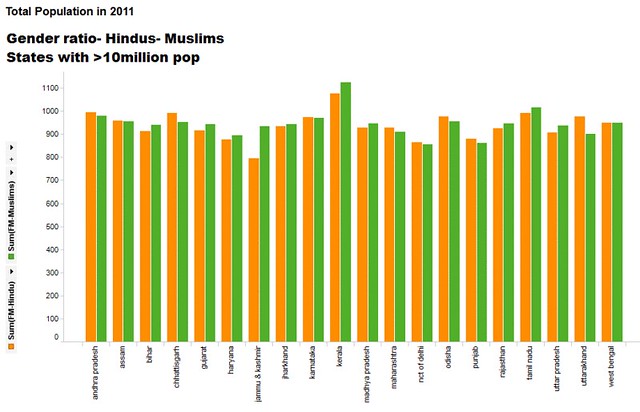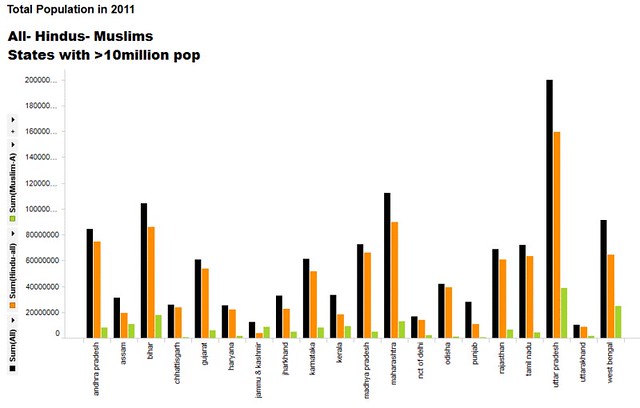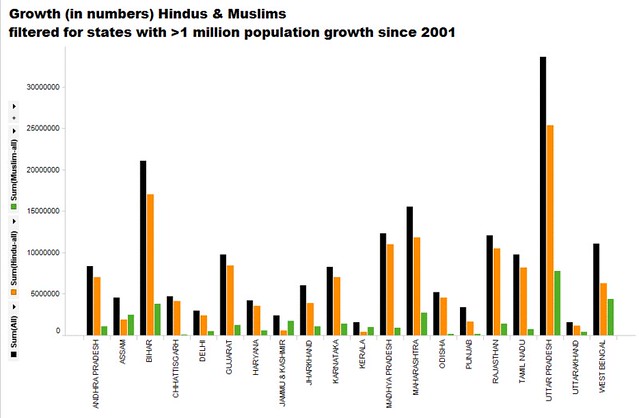By Kashif-ul-Huda, TwoCircles.net
Headlines screamed more than the numbers when census 2011 data on religious communities was released earlier this week. The most sensational headlines declared that “Hindu population declined,” which is probably the farthest from the truth you can get.
But first, the numbers- India is officially over 1.2 billion people which means we have added a total of 182 million people since the last census. This is a growth of 17.7% since the last census, this is the first time since 1961 that our growth rate is lower than 20%- a step in stabilizing the population. Another reason to be happy is that for the first time since 1951 that gender ratio shows an uptick. At 942 females per 1000 males we are pre-1961 level of gender imbalance- a long way for gender parity but definitely in the right direction.
By now, everyone knows that Hindus are 79.8% and Muslims are 14.23% of the total population. Hindu population increase since the last census is 138 million, which incidentally was the total number of Muslims in 2001. Put it another way, Hindus have added in ten years what took Muslims 1400 years (yes, of course, let’s not forget the partition) of living in India. Muslims are now 172 million, a growth of 34 million in 10 years, about the same number as total population growth in UP.
Gender ratio
966 million Hindus consists of 51.6% males and 48.4% females. 172 million Muslims divides into 51.2% males and 48.8% females. Gender ratio is much better amongst Muslims than Hindus.
Growth numbers are very encouraging when it comes to the gender ratio. For the population growth since 2001, number of girls is actually slightly higher than the number of boys. When it comes to Muslims, for every 1000 Muslim boys added since 2001, there are 1015 girls. Hindu population growth only added 991 girls for every 1000 boys.
If we look at states with more than 10 million population in 2011, then we see that Muslims lead in gender ratio in 13 of the 20 states. In states like Andhra Pradesh, Assam, Karnataka, Delhi, Punjab, and Uttarakhand, gender ratio for Muslims is lower than Hindus.
Talking about India as a whole blurs the regional disparity amongst population. Therefore if we plot the population by states then we get a clear picture of where most of the population is located and see regional imbalances.
The chart above is of states that have population of greater than 10 million people. Black bars are for total population, orange bar represent Hindu population while green represents Muslims population. You can clearly see that Uttar Pradesh, Maharashtra, Bihar, West Bengal, and Andhra Pradesh are clearly the population clusters. The bars also clearly show the relative strength of Muslim populations vis a vis Hindus and in one pic busts the myth of Muslim taking over Hindus in terms of population.
If we just look at the population added since 2001 census i.e. the population growth since the last census we can clearly see that even here Muslims addition to the population is nowhere near Hindus except in Kerala and Assam. In terms of population growth, Kerala and Assam at the lower side of the spectrum. In most states, green bars representing Muslim population is merely a blip. In fact, Uttar Pradesh, Bihar, Maharashtra, Madhya Pradesh, Rajasthan, and Maharashtra green bar is well under one third the size of bars representing Hindu population growth. Only in West Bengal that Muslims come closest to Hindu population growth but in terms of size this state will be sixth in population growth data table.
Weak links
Now if we just look at the population spread of Muslims, we can find that Uttar Pradesh (22.3% of the total Muslim population in this state), West Bengal (14.3%), Bihar (10.2%), Maharashtra (7.5%), and Assam (6.2%) make up more than 60% of the total Muslim population in India. Amongst these five states, three- West Bengal, Bihar, and Assam are some of the poorest states of India and not just for Muslims. This also means that to improve the overall socio-economic condition government, policy makers, Muslim organizations need to focus in these states for maximum impact.
So when exactly will the Muslims become a majority in India?
Umm, probably never.





